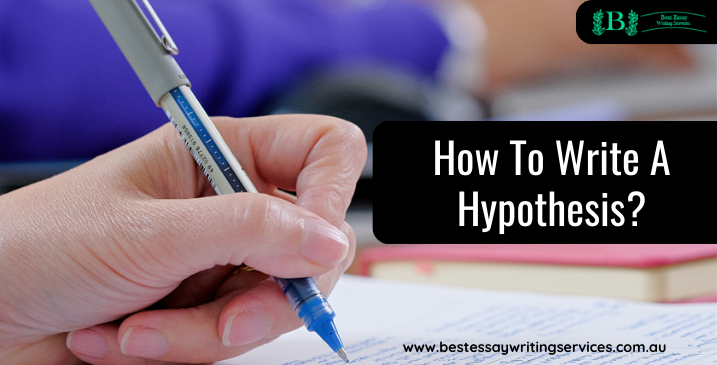A hypothesis is an essential part of the scientific method. It is an idea or proposition based on limited evidence. What comes next is the exciting part. The idea or proposition must be proved through facts, direct examination and evidence. Since the hypothesis serves as the basis for future research, learn how to write a hypothesis through steps and examples.
What is a hypothesis?
A hypothesis is a prediction about what your research will uncover. This preliminary response to your research question has yet to be tested. For some research projects, you may be required to write several hypotheses that address different aspects of your research question.
The hypothesis must be based on existing theories and knowledge, not just a guess. It also needs to be testable, meaning you can support or refute it through scientific research methods (such as experimentation, observation, and statistical data analysis).
Types of hypothesis
Depending on the nature of the research and the findings, hypotheses can be classified into one or more of seven major categories.
1. Simple hypothesis
A simple hypothesis states the relationship between two variables (dependent and independent variables).
2. Complex hypothesis
A complex hypothesis asserts the existence of a relationship between two or more variables. For example, there can be two dependent and one independent variable, or vice versa.
3. Null Hypothesis
A null hypothesis is a statement that states that there is no relationship between the variables.
4. Alternative hypothesis
A null hypothesis opposes an alternative hypothesis. It states that there is a link (one variable affects the other) between the two variables under study.
5. Logical Hypothesis
Without verifiable evidence, a logical hypothesis postulates a relationship between variables. Assertions are based on inference or reasoning rather than proof.
6. Empirical hypothesis
An empirical hypothesis often referred to as a "working hypothesis, " is currently being researched. Evidence supports empirical hypotheses, unlike logical assumptions.
7. Statistical Hypothesis
You have formulated a statistical hypothesis when you test a population sample and then use the collected statistical evidence to conclude the population as a whole. You test one part of it and then, based on the results, make an educated guess about the rest.
Characteristics of a good hypothesis
Professional writers believe a hypothesis has characteristics that help make it stronger and more effective. These features include:
- For a hypothesis to be credible, it must be clear and precise.
- It should be clear if you have chosen a hypothesis type that will state the relationship between the two variables.
- A strong hypothesis is specific and has clear scope for further study and testing.
- The explanation of the hypothesis should be simple. Note that the simplicity of a hypothesis has nothing to do with its importance.
Only a strong hypothesis will motivate readers to read the entire paper. Therefore, make sure you carefully develop your research hypothesis.
How to write a hypothesis?
Now as you know what a hypothesis is, what kind of existence it is, and how it differs from a prediction, you are probably wondering how to state a hypothesis. In this section, we'll guide you through the key steps in writing a good hypothesis and provide helpful tips and examples to help you overcome this challenge:
1. Define your research question
Here's one thing to keep in mind - whatever paper or project you're working on, the process should always start with asking the right research questions. A specific research question should be specific, clear, focused (i.e. not too broad), and manageable.
2. Do Your Basic Preliminary Research
As you may already know, a hypothesis is an educated guess of an investigation's expected results and outcomes. Thus, it is essential to gather some information before making this assumption.
At this stage, you should find the answer to your research question based on what has already been discovered- Research facts, past studies, theories, etc. Then, based on the information gathered, you should be able to make logical and intelligent inferences.
3. Formulate a hypothesis
Based on preliminary research, you should have a definite idea of what you can find during your research. Then, use this knowledge to shape a clear and concise hypothesis.
You can restate your hypothesis several different ways, depending on the type of project you're working on and the type of hypothesis you plan to use:
Non-directional:
Eating fruits and vegetables will affect a person's physical health.
Directional:
Eating fruits and vegetables will positively affect a person's physical health.
Null:
Eating fruits and vegetables will not affect one's human physical health.
4. Refine your hypothesis
Finally, refining your findings is the last step in creating a good hypothesis. This step involves determining whether your hypothesis:
- There are clear and relevant variables;
- Identifies the relationship between its variables;
- Is specific and testable;
- Suggests the expected result of an investigation or experiment.
If you need some help with your essay, give us a notice 'pay someone to write my essay', and we will help asap. We also provide nursing writing services.
Conclusion
A good hypothesis can change people's perceptions about the world around them. It is an essential component of any scientific investigation and represents what researchers hope to discover in a study or experiment. Even if the research doesn't support the hypothesis, the research is still valuable.
Hope you found this article helpful in understanding the hypothesis and types of hypothesis.
Copyright © 2024 getessayservice.com

